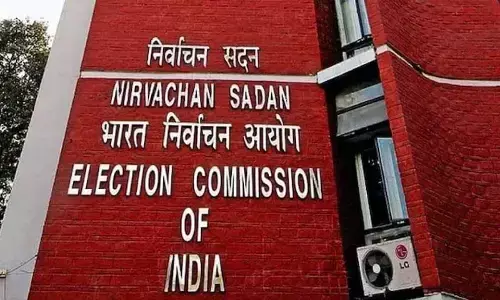How ETFs, other passive funds gaining traction

How ETFs, other passive funds gaining traction
AUM of these funds growing at about 20% per annum for last 5 yrs
There is a growing trend towards passive investing in India where the Assets Under Management (AUM) of these funds are growing at about 20 per cent per annum for the last five years. In India, the passive funds include Exchange Traded Funds (EFT), index funds and Fund-Of-Funds (FOF). In the US, the mid-2019 achieved a milestone when the entire AUM under the passive strategies have outgrown that of the active fund investments. This year in August, the assets managed by the ETFs tracking the Nifty 50 Index have crossed a landmark of Rs 1 lakh crore with the total AUM of the entire passive funds stood at Rs 2 lakh crore.
Domestically, the passive investment as a strategy is still in nascent stages of growth despite all those mind-boggling numbers. Of course, there has been a push by the govt. by launching CPSE ETF for disinvestment and also allowed the Employee Provident Fund Organisation (EPFO) to divert a part of their incremental corpus through ETF, have added traction in the last few years resulting in such tremendous AUM.
The recent attraction or headline hogging by the ETFs has arose from the lackluster performance of the active funds in the last few years. And this is particularly true with the large cap funds due to the skewed weightage of the index participants and the active managed funds can't hug the index even if they wish to, due to the regulatory restrictions over the cap on allocation to each stock.
The long-term evolution of the markets, however, favour the index/ETFs. This is evident from the experience of the advanced markets where active managers struggled to beat the benchmark indices due to higher costs of distribution, research and other issues. Unlike in the West, in India the index/theme and the related ETFs have been limited and hence the lack of choice for investing.
The most popular being the NIFTY 50, the large cap index, either by design or default and then the other indices attract relatively paltry assets and less flexibility to the investor choices. Also, active funds in India, still benefit out from the other cap-oriented investments where unearthing of gems (picking good stocks) still has an opportunity to be explored and exploited. Other than the large/giant cap stocks, the rest of the indices have only a few good stocks which still allow the active funds to outperform the benchmarks.
The biggest advantage for the investor in the passive funds like index fund or ETF is the cost of return i.e., cost of managing the fund is very low relative to an active fund. As the investment flow would be drawn into the index, the transaction costs are very limited. Also, is the research and other costs involved with an actively managed strategy. This all adds up to the investors' return as the Net Asset Value (NAV) is reflected post all the costs.
The other factors to be considered by the investor before investing in an ETF/index funds are liquidity, tracking error and expenses. Tracking error is how efficiently the ETF replicates the benchmark or index. This is nothing but the difference of the returns of the index and the ETF. This could also be influenced by expenses. The lower the cost of an ETF, the higher the replication of the index returns. This is one of the most important features that distinguishes from an active managed fund.
The exit from an ETF is purely driven by the liquidity available with that of the index or the benchmark which is being invested in. The lack of liquidity could provide stellar performance but limited exit options, making the investors stuck even when they're not pleased. The frequency of trades by the ETF over the exchange helps determine this.
With the cost being an important factor and also convenience, investors are also looking at options of actively managed strategy (portfolio) of passive funds for wealth creation. Of course, no amount of superior investment strategy or style could achieve better results for the investor as long as the investor doesn't stay passive.
(The author is a co-founder of "Wealocity", a wealth management firm and could be reached at [email protected])















